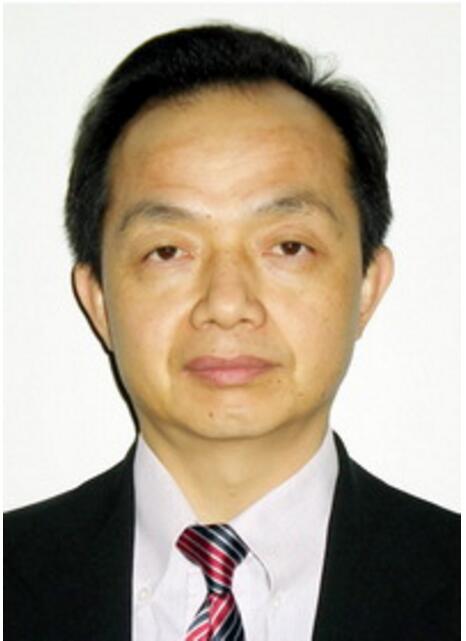博文
专家视点 | 刘生忠教授:基于钙钛矿材料的图像传感器
|
基于钙钛矿材料的图像传感器
卤化铅钙钛矿材料具有光吸收系数大、带隙可调谐、缺陷容忍度高、载流子寿命和扩散长度长等优点,是制作光电器件的理想候选材料。除了被广泛应用于太阳能电池,基于钙钛矿材料的光电探测器因其响应快速、增益因子大、探测效率高、开关比大等优点,在弱光探测、快速探测等领域具有巨大的应用前景。近年来研究表明,卤化铅钙钛矿基探测器对高能电离辐射如X射线和γ射线等也显示出了很好的探测能力。
在最新出版的《半导体学报》2020年第5期上,陕西师范大学刘生忠教授、杨周副教授对基于钙钛矿材料的图像传感器进行了评述,指出需要从四个方面提高传感器的性能:
(1)提高探测阵列的集成度,获得更高精度的成像图像。目前,单个钙钛矿探测器已经获得了优于传统Si,GaAs基探测器的性能,将其应用于成像探测领域,需要进一步减小器件尺寸,提高器件集成度,以实现高分辨率的成像器件和高清晰度的图像。
(2)在离子迁移和电子、空穴输运同时存在的条件下,光探测器件的工作机理。离子的迁移和聚集会影响器件内部和界面上电场的分布、缺陷的浓度、载流子的附加散射等一系列影响载流子输运的因素,将会对器件的工作机制产生重要的影响。需要综合考虑离子迁移对微区电场、微区载流子动力学、载流子输运模型的影响,以揭示离子迁移对器件响应性能的影响机制,建立提高器件性能的调控策略。
(3)提高器件的环境稳定性。相较于太阳能电池器件,光探测器件的工作环境相对温和;但从产生后果的影响程度上来看,探测器件失效造成的后果远大于电池器件的失效。因此,需要从材料、器件结构、器件封装等多重角度去设计和发展高稳定性光探测器件。
(4)发展非铅、低毒性钙钛矿光电材料。
Full Text
Large light absorption coefficients, tunable bandgaps, high tolerance to defects, long carrier lifetimes as well as diffusion lengths render lead halide perovskite materials ideal candidates for optoelectronic devices. Except application in solar cell, photodetectors based on perovskite materials have been recognized as another game changer due to the achievements such as high responsivity of 1.9 ×104 A/W[1], gain factor larger than 5.0 × 104[1], large detectivity of 1014 J[2], high on/off ratio of 105[3], fastest response time down to 1 ns[4], large linear dynamic range exceeding 170[5] and low detachable light intensity as small as 1 pW/cm2[6], which demonstrate the potential applications of perovskite based photodetector in the areas of weak light detection, fast detection. Expect those properties, perovskite material has shown filter-less narrowband detection[7, 8] as well as promising photodetection ability in flexible device[9]. Recently, lead halide perovskites have also shown promising detection ability for high energy ionized radiation like X-ray and γ ray. The perovskite-based detector shows much lower detection limit around 5 nGyair/s[10] and larger sensitivity around105 μC/(Gyair·cm2)[11, 12], which are even better than that of currently commercialized devices.
Those advantages have extended to imaging devices, which were achieved by assembling pixel array on perovskite materials (Fig. 1)[13, 14] or incorporating perovskite materials with TFT array[15]. The former strategy is easy to be accomplished and demonstrate the image ability of perovskite photodetector. However, the lager distance between pixel make it hard to achieve high-resolution images and compete with CMOS chip used in cell phone, which has pixel distance around 2 μm. While TFT could facilitate to obtain a high-resolution image, the electric connections between perovskite material and TFT pixels was not that good to show the full potential of perovskite detectors.

Figure 1. (Color online) (a)–(c) Schematic illustration for the projection imaging mechanism. A prepatterned photomask was used directly above the imaging assembly. Under light illumination, the optical pattern is projected through the mask with bright and dark contrast to form the image of the mask on the sensor unit. (d)–(f) The corresponding photocurrent outputs from each pixel measured under 2 V bias with different optical patterns of “0123”, “SNNU”, and an image of a butterfly. Reproduced with permission[13]. Copyright 2018, Wiley-VCH.
The further efforts should be paid on: (1) the design and building of integrating circuit on large size single-crystalline perovskites. Single-crystalline perovskite shows better optoelectronic properties and detection performance than those of poly-crystalline thin films. However, the large-size single-crystalline perovskite is till limited. At the same time, ionic nature of perovskite makes it not compatible with currently used photolithography technology, which is urgent for developing high-resolution imaging sensor. (2) working mechanism of perovskite detector. Perovskite is an ionic and electronic transport. The electrical as well as optical stimulations will affect the transportation as well as distribution of these two kinds of carriers. The better understanding of the complex transportation phenomenon will easy the design and fabrication of high-performance devices. (3) device stability. As well known, perovskite will decompose under the stresses of light, heat, humidity. For detector, the heat and humidity are most important factors affecting its stability and should be concerned during device design and material selection. (4) toxic problem. That is a dilemma accompanying with the development of lead halide perovskite devices. As lead provides very good optoelectronic properties for perovskites, the toxic problem is much concerning during the large-scale application of perovskite materials. Less toxic materials with similar optoelectronic properties are desired.
References:
[1]Chen C, Zhang X Q, Wu G, et al. Visible-light ultrasensitive solution-prepared layered organic-inorganic hybrid perovskite field-effect transistor. Adv Optical Mater, 2017, 5(2), 1600539
[2]Dou L, Yang Y, You J, et al. Solution-processed hybrid perovskite photodetectors with high detectivity. Nat Commun, 2014, 5, 5404
[3]Wang W H, Ma Y R, Qi L M. High-performance photodetectors based on organometal halide perovskite nanonets. Adv Func Mater, 2017, 27(12), 1603653
[4]Shen L, Fang Y, Wang D, et al. A self-powered, sub-nanosecond-response solution-processed hybrid perovskite photodetector for time-resolved photoluminescence-lifetime detection. Adv Mater, 2016, 28(48), 10794
[5]Lin Q, Armin A, Lyons D M, et al. Low noise, IR-blind organohalide perovskite photodiodes for visible light detection and imaging. Adv Mater, 2015, 27(12), 2060
[6]Fang Y, Huang J. Resolving weak light of sub-picowatt per square centimeter by hybrid perovskite photodetectors enabled by noise reduction. Adv Mater, 2015, 27(17), 2804
[7]Lin Q, Armin A, Burn P L, et al. Filterless narrowband visible photodetectors. Nat Photonics, 2015, 9(10), 687
[8]Fang Y J, Dong Q F, Shao Y C, et al. Highly narrowband perovskite single-crystal photodetectors enabled by surface-charge recombination. Nat Photonics, 2015, 9(10), 679
[9]Chen S, Teng C, Zhang M, et al. A flexible UV–Vis–NIR photodetector based on a perovskite/conjugated-polymer composite. Adv Mater, 2016, 28(28), 5969
[10]Zheng X, Zhao W, Wang P, et al. Ultrasensitive and stable X-ray detection using zero-dimensional lead-free perovskites. J Energy Chem, 2020, 49, 299
[11]Hu M, Jia S, Liu Y, et al. Large and dense organic–inorganic hybrid perovskite CH3NH3PbI3 wafer fabricated by one-step reactive direct wafer production with high X-ray sensitivity. ACS Appl Mater Interfaces, 2020, 12(14), 16592
[12]Pan W, Yang B, Niu G, et al. Hot-pressed CsPbBr3 quasi-monocrystalline film for sensitive direct X-ray detection. Adv Mater, 2019, 31(44), 1904405
[13]Liu Y, Zhang Y, Zhao K, et al. A 1300 mm2 ultrahigh-performance digital imaging assembly using high-quality perovskite single crystals. Adv Mater, 2018, 30(29), 1707314
[14]Zhang Y, Liu Y, Xu Z, et al. Nucleation-controlled growth of superior lead-free perovskite Cs3Bi2I9 single-crystals for high performance X-ray detection. Nat Commun, 2020, 11, 2304
[15]Kim Y C, Kim K H, Son D Y, et al. Printable organometallic perovskite enables large-area, low-dose X-ray imaging. Nature, 2017, 550(7674), 87
1963年生,宁夏平罗人,陕西师范大学教授。1983年获陕西师范大学理学学士学位,1986年获兰州大学理学硕士学位,1992年获美国西北大学工学博士学位,研究方向为物理化学。 研究领域集中在纳米材料、薄膜材料、太阳能光伏材料、电光薄膜的电化学沉积、激光表面处理和光伏技术的开发、放大和生产等方面。研究成果引起了广泛重视,其发表在《Science》上的C60分子结构被国际著名杂志长期用作封面照片,发表在英国《Nature》上的成果被许多报纸、刊物报道评论,多篇论文成为被“最多引用的论文”(most cited paper)。主要发明和专利中有多项已转化成工艺和产品,其它大部分被应用在生产上,其中“透明太阳能薄膜电池”荣获号称“发明家的奥斯卡奖”的“世界最佳发明奖”(R&D 100)。1998年入选 “世界科学家工程师名人录”。 点击阅读刘生忠教授文章:http://www.jos.ac.cn/article/doi/10.1088/1674-4926/41/5/050401?pageType=en Perspective on the imaging device based on perovskite materials Zhou Yang, Shengzhong Liu J. Semicond. 2020, 41(5): 050401 doi: 10.1088/1674-4926/41/5/050401 “钙钛矿半导体光电材料与器件”专刊 《半导体学报》组织了一期“钙钛矿半导体光电材料与器件”专刊,并邀请中科院半导体研究所游经碧研究员、华中科技大学唐江教授、南京理工大学曾海波教授和南京工业大学王建浦教授共同担任特约编辑。该专刊已于2020年第5期正式出版并可在线阅读,欢迎关注。 专刊详情请见:半导体学报2020年第5期——钙钛矿半导体光电材料与器件
《半导体学报》简介:
《半导体学报》是中国科学院主管、中国电子学会和中国科学院半导体研究所主办的学术刊物,1980年创刊,首任主编是王守武院士,黄昆先生撰写了创刊号首篇论文,2009年改为全英文月刊Journal of Semiconductors(简称JOS),同年开始与IOPP英国物理学会出版社合作向全球发行。现任主编是中科院副院长、国科大校长李树深院士。
2016年,JOS被ESCI收录。
2019年,JOS入选“中国科技期刊卓越行动计划”。
“中国半导体十大研究进展”推荐与评选工作简介:
《半导体学报》在创刊四十年之际,启动实施 “中国半导体年度十大研究进展”的推荐和评选工作,记录我国半导体科学与技术研究领域的标志性成果。以我国科研院所、高校和企业等机构为第一署名单位,本年度公开发表的半导体领域研究成果均可参与评选。请推荐人或自荐人将研究成果的PDF文件发送至《半导体学报》电子邮箱:jos@semi.ac.cn,并附简要推荐理由。被推荐人须提供500字左右工作简介,阐述研究成果的学术价值和应用前景。年度十大研究进展将由评审专家委员会从候选推荐成果中投票产生,并于下一年度春节前公布。
JOSarXiv预发布平台简介:
半导体科技发展迅猛,科技论文产出数量逐年增加。JOSarXiv致力于为国内外半导体领域科研人员提供中英文科技论文免费发布和获取的平台,保障优秀科研成果首发权的认定,促进更大范围的学术交流。JOSarXiv由《半导体学报》主编李树深院士倡导建立,编辑部负责运行和管理,是国内外第一个专属半导体科技领域的论文预发布平台,提供预印本论文存缴、检索、发布和交流共享服务。
JOSarXiv于2020年1月1日正式上线(http://arxiv.jos.ac.cn/),通过《半导体学报》官网(http://www.jos.ac.cn/)亦可访问。敬请关注和投稿!

半导体学报公众号
微信号 : JournalOfSemicond
长按二维码关注获得更多信息
https://blog.sciencenet.cn/blog-3406013-1236441.html
上一篇:特约编辑风采:钙钛矿半导体光电材料与器件专刊
下一篇:《半导体学报》2020年第6期目次